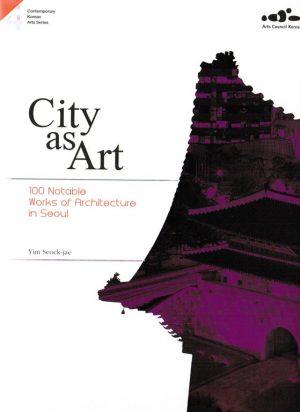Seoul, Seoul, Seoul
$29.50
Seoul has been criticized for having many problems. However, Seoul also has its unique merits and charms. Seoul is a city that started out with 200,000 people at the end of the nineteenth century and has grown to a city of 10 million people, all while going through the loss of sovereignty, colonial rule, liberation, the shock of national division, damage from a civil war, the Cold War, subsequent inter-Korean confrontations, industrialization, urbanization, and rapid economic growth.
Part I: The Past and Future in the Present discovers city plans of Seoul and ongoing efforts to develop the city into a better place to live. The past one hundred years has allowed Seoul to digest the changes and shocks occasioned by condensed modernization and war in a distinctly Korean manner and to find ways to respond to desperate situations that necessitated a focus on survival but still dared to hope for more. Although these problems have piled up, the history of Seoul should be evaluated positively. And more attention should be paid to Seoul’s potential. In its own way, Seoul has already achieved new and interesting results.
Part II: Politics of Landscape offers a careful historical study on the unfulfilled plans and lost dreams which provide the background to understand the very interesting divide within the colonial bloc along with the Great Keijo Plan of the 1920s. The interest of the Japanese Government-General to develop Seoul as a colonial administrative center conflicted with that of many Japanese settlers who wanted to develop Seoul as a commercial city, resulting in debates over urban planning for Seoul.
Part III: Contending Identities. Here we have a chance to think further on hybrid spaces of the city throughout. We also explore club culture in the Hongdae area as well as elderly culture in Jongmyo Park. In a city where everything happens so fast – compressed modernization, rapid economic growth, and rapid population aging – this hang-out culture has yet to enjoy full cultural citizenship and seems to be under contestation, even in the so-called “extraterritorial zone for the old.” We also turn to two splendid and boisterous parts of Seoul Apgujeong-dong and Dongdaemun, two different consumer spaces which represent two different lifestyles and cultural tastes, as well as two different living standards.
Part IV: Global Spaces, Historic Times deals with transnational globalization. To understand how Itaewon obtained its unique image and qualities as an alien place is to understand modern Korean history, the US-Korean relationship, the Cold War, Orientalism, Occidentalism, sexism, racism, and much more. Our Seoul journey ends in Itaewon where the local and the global, the Korean and the foreign have always been interdependent.
-
-
-
City as Art
100 Notable Works of Architecture in Seoul (Contemporary Korean Arts Series #4)$19.50 Add to cart




